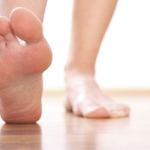Your feet, just like your heart, need some tender, loving care. So, in addition to getting routine checks from Houston’s top podiatrist, you also want to ensure that they are clean, well moisturized, and comfortable at all times.
The feet are the workforce of your body, taking about 5,000 steps every day. They also bear the weight of your body every step of the way. On top of that, you cover them with shoes and stand on them for extended periods. With so much to do, it makes sense to ensure that your feet are always well taken care of. Here are some tips to help you take care of your feet.
Don’t wear tight shoes
Tight shoes are not just uncomfortable; they may also cause a lot of problems to your feet. The same is also true for shoes that are larger than your legs. Houston’s top podiatrist advises that you should always find the right size of shoes. Tight shoes can make you unstable on your feet, increase blisters between your toes, deform your toes, and aggravate structural problems like bone spurs, mallet toe, and hammertoe. Tight shoes also aggravate conditions like numbness, flat feet, bunions, inflammation, and pain in the ball or heel of your feet. Wearing nice fitting shoes is essential for your well-being and health.
Don’t share shoes
There are certain personal items that you should never share. Handkerchiefs, towels, toothbrushes, and shoes are some common items that you shouldn’t share. While sharing shoes may not seem like a problem, the truth is it is not safe to share them. That’s because feet are a thriving ground for various microbes, particularly fungus. The nails on your toes are the most vulnerable spots. And the fact that fungus can live on in shoes, sharing shoes makes it easy for you to pass down the fungus from one foot to another. Fungus tends to spread more when the shoes are wet, but that doesn’t mean dry shoes are safe. Experts say even those who wear socks the entire day and work in a reasonably clean and hygienic environment will also have fungus on their feet. Sharing shoes can facilitate the spread of such fungus.
Wash your feet thoroughly
Healthy feet begin with good hygiene. So while you take your shower, you want to take some extra time to clean your feet with water and soap thoroughly. Once you’re done, ensure that you wipe them dry, not forgetting the area between each toe. Drying your toes and the spaces between them prevents fungus from multiplying. Fungal organisms love moisture, so they are likely to thrive when your feet aren’t clean and dry. Wearing clean and dry can sock also help keep the fungus at bay.
Examine your feet regularly
After cleaning, it is essential to check your feet for any visible problems. Check around your sole and between your toes for peeling or scaling, which is often an indication of the athlete’s foot. Also, check for blisters, redness, cuts, stretches, and swelling. Noticing these problems early can prevent serious complications later. Don’t forget to look for any discoloration on your toenails which often point to nail fungus. And don’t put any nail polish on an infected nail as this could worsen the problem.
Get regular foot checks if you are diabetic
If you have diabetes, you may need to get regular checks to ensure your feet are in perfect condition at all times. Diabetes may cause circulatory issues because of its ability to clog up arteries and small veins in your feet. Because of inadequate blood supply, wounds may take longer to heal. If you have a wound on your feet and are diabetic, it is in your best interest to have it checked by a podiatrist to avoid causing further problems.
Give yourself a foot massage
A foot massage can relieve tired muscles. The benefits of a massage vary based on how much pressure you apply. Using strong pressure reduces pain and tension in your feet, whereas a light one can be more relaxing. A massage also stimulates your nervous system and can improve your circulation.
Moisturize your feet
Moisturizing your feet helps them to retain their natural water in the outermost layer. It also serves as an additional barrier protecting your skin from the elements. Nourishing ingredients like vitamin A and E found in some lotions are excellent for treating dry skin. Use your cream of choice regularly after washing or scrubbing your feet to keep them rehydrated and soft.
Get routine foot exams
Last but not least, you always want to see your podiatrist whenever you have any pain, aches, symptoms, or any concern about your feet’ health. Your podiatrist will use their knowledge and experience to determine or diagnose any problem and advise you on how often you should visit the off
